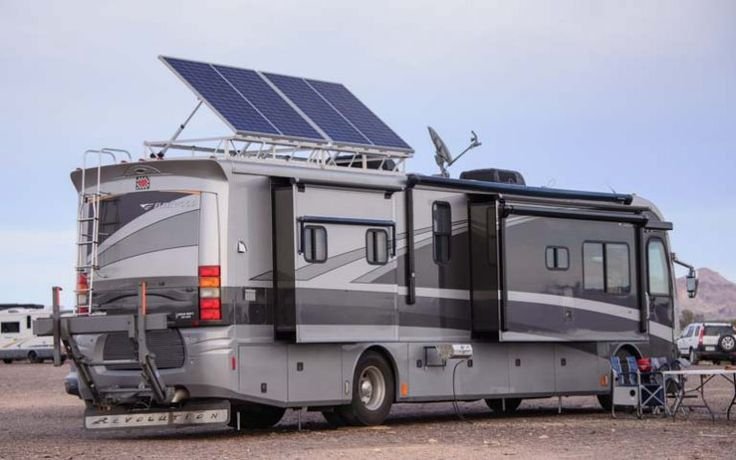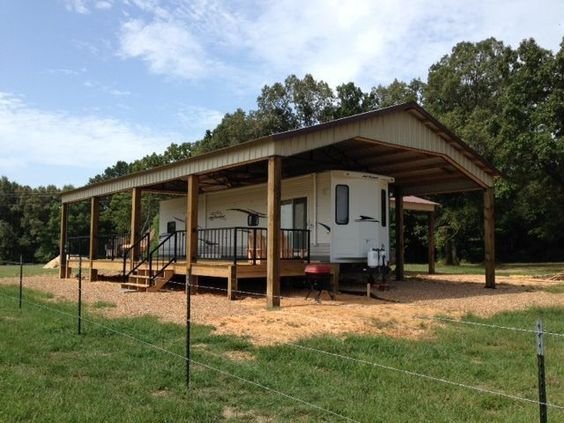The Wharf 7 project at Bayport Container Terminal represents a significant infrastructure development requiring specialized housing solutions for construction and port workers. This 1,000 linear feet of new wharf construction demands a workforce that may need extended on-site accommodation in what can be a remote location along the Houston Ship Channel.
RV lodging provides construction and port workers with cost-effective, comfortable housing directly at the job site, eliminating lengthy commutes and reducing project costs. Traditional hotel accommodations often prove expensive and inconvenient for long-term construction projects, making mobile housing solutions an attractive alternative for employers managing extended work schedules.
This comprehensive guide explores the various RV lodging options available for Wharf 7 project workers, covering everything from basic amenities to project management considerations. The information addresses the unique housing challenges faced by port construction teams and examines how temporary housing solutions can improve worker satisfaction while supporting project efficiency at one of the Gulf Coast’s busiest container terminals.
Overview of Wharf 7 Project and Bayport Container Terminal
The Wharf 7 project represents a significant 1,000-foot berth expansion at Bayport Container Terminal, scheduled for activation in December 2025. This development increases Port Houston‘s capacity to handle five post-Panamax vessels simultaneously at Bayport, supporting the port’s position as a major Gulf Coast container hub.
Wharf 7 Construction and Purpose
Construction of Wharf 7 encompasses 1,000 linear feet of new wharf structure at Bayport Container Terminal. The project scope includes comprehensive infrastructure development with dredging of approximately 300,000 cubic yards of material.
Key construction elements include drilled shaft foundations, structural concrete installation, and advanced fender systems. The project also incorporates crane rails, utility infrastructure, and a stevedore support building to support operations.
Project Timeline and Status:
- Construction began nearly two years ago
- Expected completion: December 2025
- Current status: Ahead of schedule by nearly two months
The new berth will initially utilize Bayport’s existing crane fleet. Additional crane equipment is scheduled to arrive in March 2026 to fully support the expanded capacity.
Strategic Role of Bayport Container Terminal
Bayport Container Terminal serves as a critical component of Port Houston’s container operations network. The terminal specializes in handling containerized cargo and serves as an ideal gateway for automotive vehicle imports and distribution.
The facility has experienced substantial growth, with double-digit container increases recorded recently despite global supply chain challenges. This growth demonstrates the terminal’s strategic importance in Gulf Coast maritime operations.
Terminal Capabilities:
- Current capacity: Four post-Panamax vessels
- Expanded capacity with Wharf 7: Five post-Panamax vessels
- Specialized automotive vehicle handling
- Container yard operations
The terminal’s location provides efficient access to inland transportation networks. This positioning supports Port Houston’s role in handling approximately two-thirds of all containerized cargo in the U.S. Gulf of Mexico region.
Port Houston Expansion Initiatives
Port Houston’s project and construction management team oversees multiple concurrent expansion projects across its terminal network. These initiatives support the port’s mission to enhance operational capacity and economic opportunities.
The Capital Improvement Projects program includes infrastructure upgrades at Bayport, Barbours Cut, and Turning Basin terminals. Current projects range from wharf construction to security enhancements and utility improvements.
Related Bayport Projects:
- Exit gate expansion with four additional lanes
- Security system upgrades in container yards
- Annual pavement and maintenance programs
- Fender system maintenance initiatives
The Wharf 7 project represents part of a broader infrastructure investment strategy. Port Houston continues planning additional berth expansions and facility improvements to accommodate projected regional demographic growth and increased cargo volumes.
These expansion efforts ensure the Houston Ship Channel complex remains positioned for future growth. The coordinated approach to infrastructure development maintains Port Houston’s competitive advantage in Gulf Coast maritime operations.
RV Lodging Options for Port Workers
Port workers at Wharf 7 and Bayport Container Terminal have access to specialized RV housing solutions that address the unique challenges of maritime work schedules. These accommodations offer cost-effective alternatives to traditional hotels while providing proximity to Port Houston facilities.
Benefits of RV Housing Near Port Terminals
RV lodging eliminates lengthy commutes for workers operating on extended port schedules. Workers can rest between shifts without traveling significant distances from Wharf 7 or Bayport Container Terminal.
The housing solution reduces transportation costs and time lost in transit. Port workers often face irregular hours due to vessel arrivals and cargo operations. RV accommodations allow immediate access to work sites when called for emergency operations or shift changes.
Cost advantages include:
- Lower daily rates compared to hotel rooms
- Elimination of daily commuting expenses
- Reduced meal costs with full kitchen facilities
RV units provide privacy and comfort that shared accommodations cannot match. Workers have dedicated living spaces with bathrooms, kitchens, and sleeping areas. This setup supports better rest quality between demanding port shifts.
The flexibility of RV housing accommodates varying project durations. Whether workers need housing for weeks or months, RV rentals scale according to Port Houston contract requirements.
Types of RV Lodging Available
Travel Trailers offer compact living spaces suitable for individual workers or small crews. These units typically include basic kitchen facilities, sleeping areas, and bathroom amenities. Travel trailers work well for shorter-term assignments at Bayport Container Terminal.
Mobile Homes provide expanded living space for longer-term port projects. These units feature full-size appliances, multiple bedrooms, and larger living areas. Mobile homes accommodate families when workers relocate for extended Port Houston assignments.
Motorhomes combine transportation and lodging in single units. Workers can drive these self-contained vehicles directly to port facilities. Motorhomes offer maximum flexibility for workers moving between different Houston port locations.
Sheldon Lake RV at 16925 Crosby Fwy, Houston, TX 77049 provides specialized RV solutions for port workers. Their fleet includes units configured specifically for maritime industry housing needs. Contact them at (281) 456-9703 for availability and pricing information.
Standard amenities across RV types include:
- Full kitchen with refrigerator and stove
- Private bathroom with shower
- Climate control systems
- Electrical hookups and water connections
Accessibility to Wharf 7 and Bayport Facilities
RV parks near Port Houston provide strategic positioning for accessing both Wharf 7 and Bayport Container Terminal. Workers can reach either facility within 15-20 minutes during non-peak traffic hours.
Highway 146 offers direct routing from RV locations to Bayport Container Terminal. This route minimizes travel time during shift changes when multiple workers commute simultaneously. The highway provides truck-friendly access for workers driving larger vehicles to port facilities.
Transportation considerations:
- Proximity to major Houston port access roads
- Parking availability at terminal facilities
- Public transportation connections for non-drivers
Wharf 7 accessibility benefits from multiple approach routes through the Houston Ship Channel area. RV housing locations consider these traffic patterns when positioning accommodations. Workers avoid downtown Houston congestion while maintaining reasonable commute times.
Port Houston security requirements influence RV placement decisions. Housing providers coordinate with terminal security to ensure worker identification and access procedures function smoothly. This coordination prevents delays during shift transitions at both Wharf 7 and Bayport Container Terminal.
Features and Amenities in Wharf 7 Project Housing
The Wharf 7 project provides comprehensive amenities designed specifically for port worker housing needs. These features include modern kitchen installations, durable flooring systems, recreational facilities, and outdoor community spaces.
Quartz Kitchen Countertops and Modern Interiors
Wharf 7 units feature quartz kitchen countertops that provide durability and easy maintenance for busy port workers. These non-porous surfaces resist stains and scratches from daily use.
The kitchens include stainless-steel appliances designed for efficiency and longevity. Open-concept layouts maximize space utilization in the compact living areas.
Modern finishes throughout the units create a clean, professional living environment. In-unit amenities include adequate closet space and defined living areas that separate work and rest zones.
Each unit provides functional design elements that accommodate shift workers’ varying schedules. The interior layouts prioritize both privacy and communal living aspects.
Wood-Style Plank Flooring and Spacious Layouts
Wood-style plank flooring runs throughout the living areas, providing easy cleaning and maintenance. This flooring choice withstands heavy foot traffic and resists moisture common in port environments.
The flooring extends across open-concept spaces that connect kitchen, living, and dining areas. Floor plans start at 687 square feet and accommodate different family sizes.
Unit layouts include defined sleeping spaces with privacy separation from main living areas. Private balconies extend the living space and provide outdoor access.
Storage solutions integrate into the design to maximize space efficiency. The layouts accommodate both individual workers and families in the port community.
Saltwater Pool and Fitness Center
The saltwater pool provides recreational facilities for residents after demanding work shifts. Saltwater systems require less chemical maintenance and offer gentler water conditions.
A dedicated fitness center serves the health and wellness needs of port workers. The facility includes exercise equipment suitable for maintaining physical fitness required in maritime work.
Both amenities operate on schedules that accommodate various shift patterns common in port operations. The facilities provide stress relief and physical activity options close to housing units.
Pool and fitness areas include proper ventilation and safety features. These recreational spaces foster community interaction among residents.
Community Garden and Outdoor Recreation
The community garden allows residents to grow fresh produce and engage in outdoor activities. Garden plots provide personal growing space and contribute to food security for port worker families.
Outdoor recreation areas include landscaped spaces for relaxation and social gatherings. These areas accommodate both individual and group activities.
The garden spaces include water access and tool storage for resident convenience. Communal outdoor areas promote neighborhood interaction and community building.
Pet-friendly policies allow residents to keep animals in designated outdoor areas. The outdoor spaces include walking paths and green areas for recreation.
Project and Construction Management for Wharf 7 Housing
Managing the Wharf 7 housing project requires coordinated efforts between multiple stakeholders and adherence to port-specific operational requirements. The project timeline aligns with Port Houston’s broader infrastructure development schedule while maintaining strict safety protocols.
Collaboration Among Developers and Port Authorities
Port Houston’s Project and Construction Management team oversees coordination between housing developers and port operations. This partnership ensures RV lodging facilities integrate seamlessly with existing terminal infrastructure.
The development team must work within Port Houston’s established protocols for construction near active shipping operations. Regular meetings between project managers, port authorities, and housing developers address scheduling conflicts and operational concerns.
Key coordination areas include:
- Access road planning around container yard operations
- Utility connections that don’t interfere with crane rail systems
- Security integration with existing perimeter protocols
- Waste management coordination with terminal services
Developers must obtain clearances from Port Houston before beginning each construction phase. The port authority reviews all plans to ensure compliance with federal maritime regulations and local zoning requirements.
Communication protocols require daily briefings during active construction periods. These briefings address vessel schedules, equipment movements, and any operational restrictions affecting the housing project timeline.
Safety and Operational Standards
Construction of RV housing facilities near active port operations requires enhanced safety protocols beyond standard residential projects. Workers must complete maritime safety training before accessing construction areas.
Safety requirements include:
- Hard hat and high-visibility vest protocols
- Restricted access zones during crane operations
- Emergency evacuation procedures specific to port environments
- Chemical spill response training for petroleum product handling
The project follows Port Houston’s established safety standards for construction within terminal boundaries. These standards address noise restrictions during vessel operations and equipment movement protocols near active wharves.
Safety inspections occur weekly rather than monthly due to the proximity to heavy maritime equipment. Inspectors evaluate both construction progress and adherence to port-specific safety requirements.
All electrical and plumbing work must meet marine environment standards due to salt air exposure and potential flooding. Materials selection prioritizes corrosion resistance and durability in coastal conditions.
Timelines and Project Completion
The Wharf 7 housing project timeline coordinates with Port Houston’s broader terminal expansion schedule. Construction phases align with periods of reduced vessel traffic to minimize operational disruptions.
Project phases include:
- Site preparation and utility installation: 3 months
- RV pad construction and electrical hookups: 4 months
- Amenity building construction: 2 months
- Final inspections and occupancy permits: 1 month
Weather delays factor significantly into coastal construction timelines. Hurricane season restrictions may pause construction activities from June through November, extending overall project duration.
Port Houston requires completion milestones to align with their operational calendar. The housing project must reach substantial completion before peak shipping season begins in early spring.
Final inspections involve both municipal building departments and Port Houston’s facilities management team. Occupancy permits require approval from port security to ensure resident access doesn’t compromise terminal operations.
The project timeline includes buffer periods for weather delays and potential discoveries of contaminated soil common in industrial port areas.
Frequently Asked Questions
Port workers considering RV lodging at the Wharf 7 Project often inquire about amenities, costs, lease terms, and proximity to essential services. These accommodations offer flexible housing solutions with varying lease options from 2-15 months.
What are the amenities available for port workers at the RV lodging associated with Wharf 7 Project?
The RV lodging facilities provide basic utilities hookups, parking spaces, and guest parking for overnight visitors.
How do the housing facilities at Wharf 7 Project compare in terms of cost and comfort to traditional apartments on Daniel Island?
RV lodging typically costs less than traditional Daniel Island apartments but offers more basic accommodations with utilities billed separately.
What are the office hours for accessing the gym at Wharf 7?
Gym access hours are not currently specified for the Wharf 7 Project RV lodging facilities.
Can you provide reviews or testimonials from port workers who have stayed at the Wharf 7 Project’s RV lodging?
Port worker testimonials for the Wharf 7 Project RV lodging are not publicly available at this time.
What is the proximity of Wharf 7 Project’s RV lodging to essential services and transportation options?
The facility is located within the Daniel Island area with access to assigned schools including Bishop England and Daniel Island High School.
What types of lease agreements are available for temporary housing solutions at the Wharf 7 Project?
Lease terms range from 2-15 months in length to accommodate temporary housing needs for port workers.




